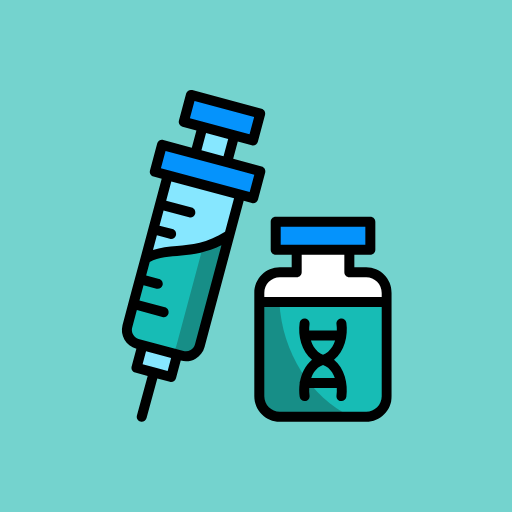Our precision analyzes for animal health
At Iodolab, we put our expertise at the service of veterinarians, laboratories, zoos and research centers to guarantee reliable and rigorous analyses. Whether you need a complete assessment or a specific dosage, we offer two formulas adapted to your needs:
A la carte analyzes
Are you looking for targeted analysis? Our à la carte services allow you to choose precisely the dosages necessary for personalized monitoring. We analyze various parameters in blood, milk, urine and saliva according to your requirements.
Our areas of analysis:
Trace elements (copper, zinc, selenium, etc.).
Vitamins (A, D, E…).
Anti-oxidants.
Immunity (cattle, sheep, goats, horses, poultry, other species).
Inflammation and metabolism.
Acid-base balance & electrolytes.
Endocrinology & toxicology.
Pregnancy diagnosis (cattle, sheep/goats, buffalo).
Flat rate analyzes
For optimal monitoring, we offer specialized packages adapted to different animal species. These packs bring together several complementary analyses, offering a global vision of the state of animal health while optimizing costs.
Our packages:
Ruminant Packages – Metabolic and nutritional monitoring of cattle, sheep and goats.
Equine Packages – Assessment of biological imbalances and performance monitoring.
Trace Elements & Vitamins Packages – Nutritional balance and oxidative stress.
Download our full catalog or request your analysis today!
Download your Chronopost label.
Need a PCR analysis?
Need advice or a recommendation? Contact us to discuss with our specialists!
Sampling method
Obtaining an interpretable and reliable biology result is the result of the mastery of the analytical technique, the sampling technique (type of tube, filling volume), the delay and the conditions of dispatch
Sending :
Place the tube in the refrigerator before shipping to extend its shelf life (+4°C maximum 2 days).
Shipment preferably from Monday to Wednesday: avoid shipment on Friday (risk of deterioration during the weekend).
The use of expired tubes is not encouraged.
For shipment by DHL, ask us for packing slips and quotations. We can import from UK, IRE, and many countries.
Tubes received before 11:00 am are processed the same day, the others can be carried over to the next day.
Primary tubes and secondary tubes after analysis are kept for two weeks. They are then systematically destroyed. The sample remains the property of the customer. If the customer wishes to recover it after analysis, he must request it.
Sampling :
Choose the right tube according to the examination to be carried out:
Tube colours are standardised and meet French, European and international standards. Biochemical examination: use a dry tube (with or without separator gel) for a serum assay or a Heparin-Lithium tube for a whole blood or plasma assay. Assay on red blood cells (e.g. GSH-pxe, SODe): Whole blood is required to isolate the red blood cell. The dry (red) tubes contain coagulation activators, so the cells form a clot which prevents us from isolating the erythrocytes -> rejected tubes.
Choose the tube volume adapted to the species and the examination to be carried out:
The quantity of anticoagulant is calculated precisely according to the tube capacity (e.g. filling level not reached: dilution effect of the sample and disturbances of certain analyses due to too high concentration of anticoagulant).
Fill the sample tubes :
Sampling with a syringe: rapid and delicate transfer of blood into the tube, taking care to remove the needle from the syringe to avoid iatrogenic haemolysis of the sample. Gently invert several times to homogenize the blood with the anticoagulant. Recommended order if several tubes are to be filled: Dry without additive, Citrate, Dry with additive, Heparin and EDTA. This minimizes clotting-related interference.
Avoid interference due to incorrect choice of anticoagulant:
Lithium Heparin allows all the biochemical analyses, electrolytes and acid-base balance to be carried out. Caution: Sodium heparin obviously interferes with Na+ assays. – Citrates do not allow either the assays of calcium, many enzymes, electrolytes and elements of the acid-base balance. – Fluoride tubes block glycolysis: essential for blood sugar dosing. – EDTA is a chelating agent; it traps metals -> impossible to dose Zn, Cu, Fe, Ca, Mg,… EDTA chelates calcium and as such is to be avoided for biochemical assays in general. Indeed, a large number of biochemical assays use calcium as a cofactor and are therefore strongly disturbed: Mg, Creatinine, PAL, Amylase for example will be strongly underestimated. Conversely, interactions with electrolyte assays will give results of K+ and Na+ strongly overestimated.
Pre-analytical factors :
Choose the right tube according to the examination to be carried out:
Tube colours are standardised and meet French, European and international standards. Biochemical examination: use a dry tube (with or without separator gel) for a serum assay or a Heparin-Lithium tube for a whole blood or plasma assay. Assay on red blood cells (e.g. GSH-pxe, SODe): Whole blood is required to isolate the red blood cell. The dry (red) tubes contain coagulation activators, so the cells form a clot which prevents us from isolating the erythrocytes -> rejected tubes.
Choose the tube volume adapted to the species and the examination to be carried out:
The quantity of anticoagulant is calculated precisely according to the tube capacity (e.g. filling level not reached: dilution effect of the sample and disturbances of certain analyses due to too high concentration of anticoagulant).
Fill the sample tubes :
Sampling with a syringe: rapid and delicate transfer of blood into the tube, taking care to remove the needle from the syringe to avoid iatrogenic haemolysis of the sample. Gently invert several times to homogenize the blood with the anticoagulant. Recommended order if several tubes are to be filled: Dry without additive, Citrate, Dry with additive, Heparin and EDTA. This minimizes clotting-related interference.
Avoid interference due to incorrect choice of anticoagulant:
Lithium Heparin allows all the biochemical analyses, electrolytes and acid-base balance to be carried out. Caution: Sodium heparin obviously interferes with Na+ assays. – Citrates do not allow either the assays of calcium, many enzymes, electrolytes and elements of the acid-base balance. – Fluoride tubes block glycolysis: essential for blood sugar dosing. – EDTA is a chelating agent; it traps metals -> impossible to dose Zn, Cu, Fe, Ca, Mg,… EDTA chelates calcium and as such is to be avoided for biochemical assays in general. Indeed, a large number of biochemical assays use calcium as a cofactor and are therefore strongly disturbed: Mg, Creatinine, PAL, Amylase for example will be strongly underestimated. Conversely, interactions with electrolyte assays will give results of K+ and Na+ strongly overestimated.
Techniques
Do you have technical questions about the role and interest of analyzes of trace elements, minerals, vitamins, immune transfer, measurement of oxidative stress or even pregnancy diagnosis? Consult our following technical pages.


